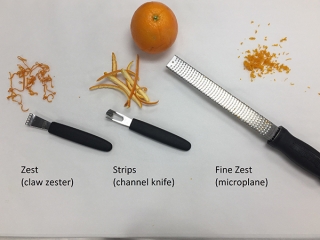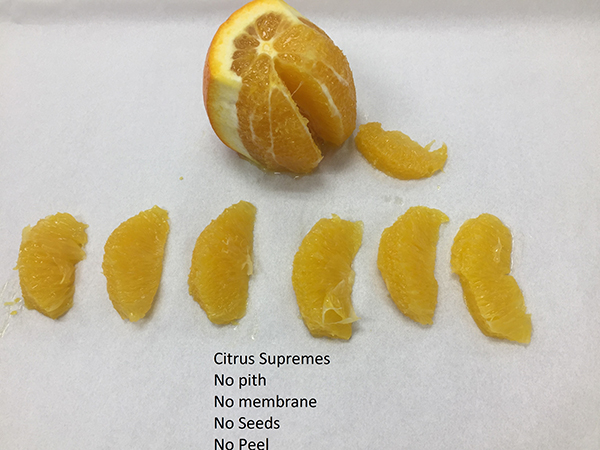
Teaching Yield Through Math and Knife Skills
05 November 2024Teaching yield quantity from fruit through poultry helps solidify the foundation of food costs.
By Dr. Jennifer Denlinger, CCC, CHEP
Feedback & comments: This email address is being protected from spambots. You need JavaScript enabled to view it.
A culinary education foundation is understanding how much something costs and how much yield from that product can be derived. A food business’s profits are found in the difference between the edible portion and the as purchased portion. Top-notch knife and solid math skills are a big factor in the pricing equation. My goal is to have students understand that yield matters – especially in light of rising food prices and the environmental benefits of minimizing food waste.
I do yield testing in three parts of the culinary program and the first time comes during the first lab course with students. I use oranges to show them how to do supreme cuts with sections that have no pith, membranes, seeds or peels. I also show them the difference between a claw zester, channel knife and Microplane. This is a great example of creating as much EP of a product as possible.
Later in the program when students take the cost control class, I will focus more on the math skills required to find the AP versus EP and their associated costs. I still use fruit for the lesson, however I add in additional products such as pineapple, cantaloupe, banana, apple, grapes and Kiwi. I will have the students work in pairs or teams for a project that has them assuming they are part of a hotel’s catering department and need to determine how much fruit to purchase for a banquet with 1,050 people attending. At the end of the project, I ask them to describe what they would do to lower the price of a cup of fruit considering options such as substitution, portion size and prices. I also ask them if they had overpurchased a quantity of fruit what new dishes or ideas they could come up with to make an additional profit.
Finally, toward the end of the curriculum, we begin basic butchery where the product prices are higher. To begin, I give them a Poultry Yield Test sample form that asks for items such as cost per pound and ounce, ounce per weight of section or part, percentage of the whole, percentage of usable meat and adjusted AP price of the whole bird. I also give them formulas to help them work through the form. After they are familiar with the terms and form, they move on to other proteins such as fish.
You can use any of the above examples as learning, math or skills activities depending on your curriculum. You can also consider a timed activity where students weigh an orange, cut supremes and account for all their product and weight if you have a few minutes left at the end of class. Perhaps you could give a prize to the most accurate student.
Attachments:
Orange Yield Test
Fruit Yield Test – Part 1
Fruit Yield Project – Part 2
Poultry Yield Test example
Poultry Yield Test
Fish Yield Test
Chef Jennifer M. Denlinger, PhD., CCC, CHEP, is the Culinary Management Program Department Chair at the Poinciana Campus of Valencia College. She is also the vice president of ACF’s Central Florida Chapter. Additionally, Chef Denlinger earned the 2020 Innovation Award, sponsored by CAFÉ and the Idaho Potato Commission, for a creative escape room based on safe food handling procedures. She also earned the 2021 Green Award sponsored by the United Soybean Board and was runner-up in 2021 for the Postsecondary Education of the Year sponsored by Sysco Corporation.
